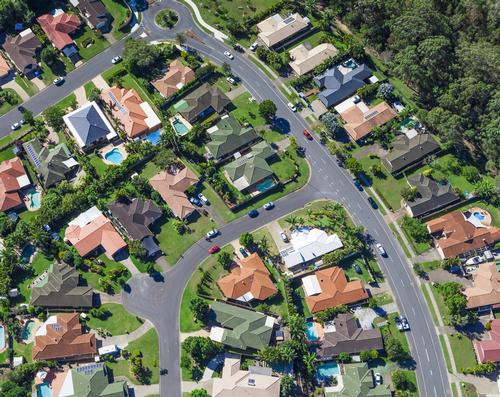22 Aug 2014
Green dream? Suburban living linked to obesity epidemic in US study
BY Jak Phillips

Despite its long-held connotations with health and wellbeing, leafy suburban living could in fact be a contributing factor in obesity, diabetes and heart disease, according to two American academics.
Assistant professors of engineering Norman Garrick (University of Connecticut) and Wesley Marshall (Colorado University) have been analysing how US street networks could be influencing health.
In a study published in the Journal of Transport and Health, Garrick and Marshall state that densely-packed cities with lots of crossroads (think the classic Manhattan grid) have lower levels of obesity, diabetes, high blood pressure, and heart disease. By contrast, they find that indicators of ill-health are higher in sparse suburban areas with lots of cul-de-sacs – reporting that those living in these spread out communities spend around 18 per cent more time driving than people who live in dense grids.
Transportation seems to be a key factor. The pair also report that wide, multi-lane streets are more likely to lead to higher levels of obesity and diabetes, with the theory posited that the less-pedestrian friendly an area, the lower the rates of physical activity. Whereas people who live in cities often have no choice but to walk and cycle as a means of beating congested streets, suburbanites seem more inclined to take the car to cover the longer distances they have to travel, taking advantage of the comparatively quieter roads.
“It might not be common for people to explicitly contemplate health when selecting a place to live,” Garrick and Marshall write, “but this research indicates it is worth considering.”
The pair say it’s now time for city planners to shake-off archaic notions of the benefits of suburban living and make health a key consideration of urban design.
“Taken together these findings suggest a need to radically rethink how we design and build the streets and street networks that form the backbone of our cities, towns, and villages,” Garrick said in a press statement. “This research is one more in a long line that demonstrates the myriad advantages of fostering walkable places.”
Close Window